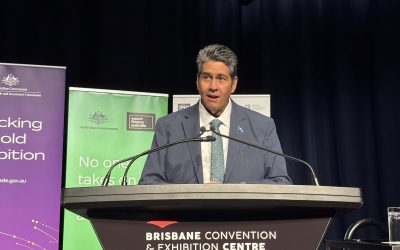This article co-authored by Bob Lyon and Anthony Bergin and has been republished here with permission from the original publisher, Strategic Analysis Australia.
The Albanese government recently pledged an extra $6.3 million to prevent the loss of banking services in the Pacific at the Pacific Banking Forum in Brisbane. The Forum identified areas for collaboration between commercial banks, central banks, regulators and governments, to improve economic prosperity across the region.
Assistant Treasurer Stephen Jones said if the island countries didn’t have a banking system they’d lack a modern economy. The region has suffered as financial institutions have reduced or withdrawn banking services, affecting the ability of island countries to access cross‑border payment services and fund national projects. There’s real concern now about the loss of correspondent banking relationships (CBR) in the Pacific: correspondent banks provide banking services to other financial institutions overseas.
At the recent Pacific Island Leaders Meeting (PALM10) meeting of Japan and the Pacific Island Forum members, including Australia, held in Tokyo from 16-18 July a Joint Action Plan was endorsed. Over the next three years PALM Partners will support the Pacific in addressing the issue of CBR. A CBR Roadmap for the Pacific has been developed with recommendations on collecting and reporting standardised CBR data; developing risk assessment methodologies that would provide information about actions on anti-money laundering and combating the financing of terrorism; assessing the strengths and gaps in current information-sharing frameworks; undertaking remittance corridor risk assessments; and developing a CBR resilience framework.
ANZ and Westpac are still in the region, but there’s concern whether they’ll remain, reduce their operations or leave our island neighbours. Australian banks, notably ANZ and Westpac first opened in the Pacific in the nineteenth century. One of ANZ’s original banks, the Union Bank of Australasia opened in Fiji. Westpac followed and by 1910 ANZ and the Bank of New South Wales, later to become Westpac, (the bank of the western Pacific) had opened in PNG. During the last century, these banks, complemented by the acquisitions of new local Pacific and New Zealand banks, provided essential banking services for the region. This included trade finance and foreign currency to support the growth of trade in these small states.
Over the last century the two large Australian banks grew in the region. They bought British (Barclays and Lloyds), New Zealand (Bank of New Zealand), and Hawaiian (Bank of Hawaii) banks to build scale in their businesses. ANZ opened in East Timor and Guam and ran these under their Pacific operations. The total earnings only formed a small portion of the large Australian banks’ earnings. But the returns on capital were healthy. The Commonwealth Bank’s operation in PNG was, however, sold some years ago to local interests. They also had a bank in Fiji through their Colonial and Auckland Savings Bank subsidiaries. This was sold to another PNG bank. Two years ago, the ANZ exited community banking in American Samoa and Guam. In 2015, Westpac sold its operations in 5 small Pacific countries to PNG’s BSP.
Despite the importance of the provision of financial services to the Pacific interest in maintaining these networks is waning in bank head offices. If Australian banks were to withdraw, it’s not only the financial services that they provide which would be missed. It’s the skills that have been transferred to local staff who now fill most of the senior positions in each country. There’s now a high number of home-grown bankers filling senior roles in many industries in the Pacific who are critical for the islands operating in an international trading economy.
Without the existence of a strong foreign owned banking system there’s risks around the availability of hard currency to support imports and exports. Every country needs a strong fiscal system and a disciplined and safe banking environment. There’s only a couple of island countries that can guarantee that on their own.
There are examples where local banking systems in the region have failed. In the 1990s, there were dozens of Russian banks domiciled in Nauru, which was a tax haven. Over $100 billion was laundered through these banks. Most foreign trade is denominated in US dollars. The US authorities monitor the islands’ foreign exchange transactions very closely. The presence of Australian banks in the Pacific gives a level of comfort that the norms of global trade are adhered to.
It’s pleasing that Westpac recently pledged to invest in its Pacific banking operations. But if Australian banks desert the region, we shouldn’t be surprised if island governments look to other sources to augment their banking systems.
Nauru recently signed a deal with the state-owned Bank of China following the withdrawal of Bendigo and Adelaide Bank. Nauru uses Australian currency. The Bank of China may promote the renminbi over our dollar. Owning and running a bank in the Pacific gives special access to the country’s national elites. Chinese bankers in the islands would be required to report back to Beijing on their access to island leaders, with their local contacts exploited.
Bob Lyon served for over a decade as managing director for ANZ Pacific and personal banking Asia. Anthony Bergin is a senior fellow at Strategic Analysis Australia.
—
Pic courtesy: Strategic Analysis Australia
Here is the link to the original article.



